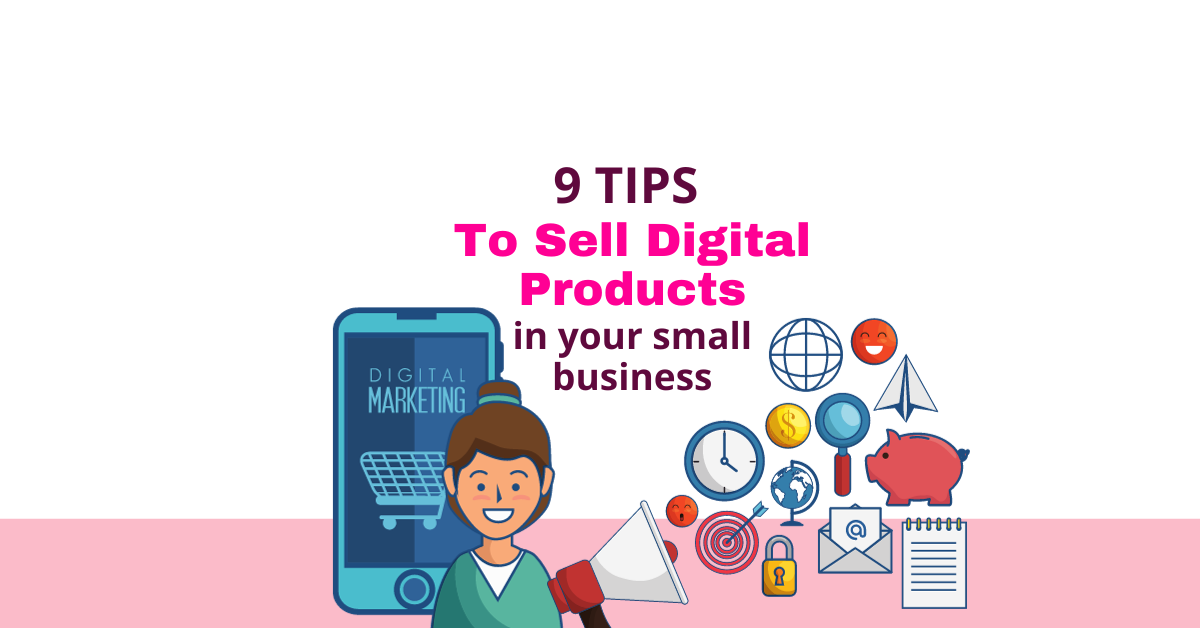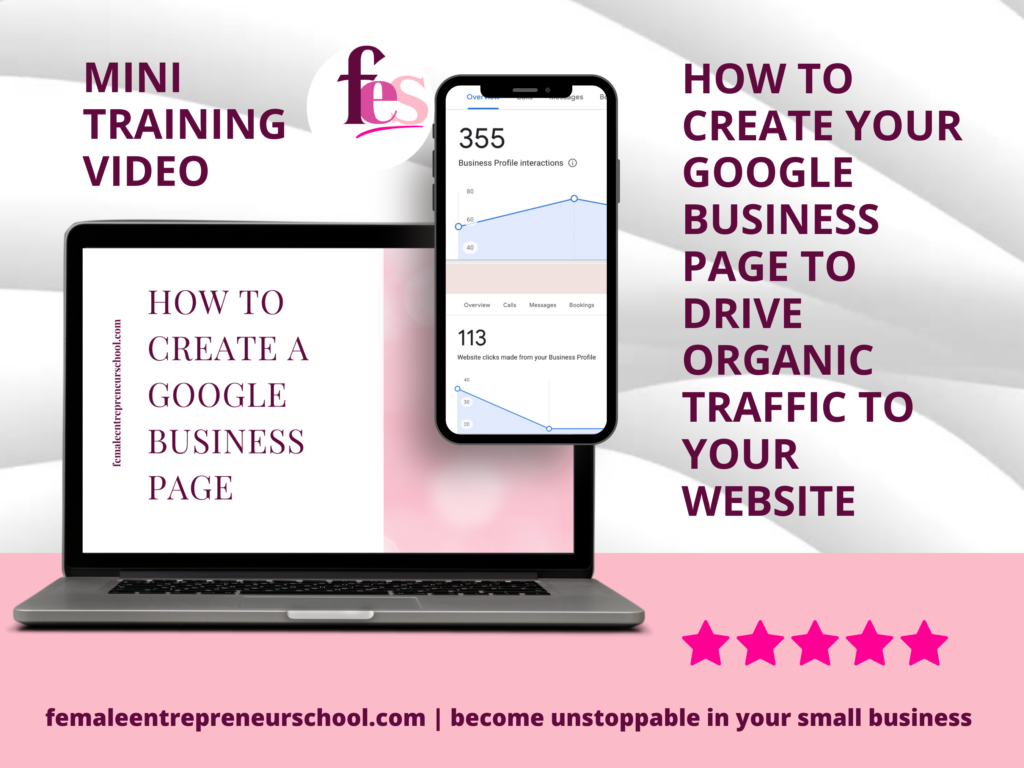9 Tips To Sell Digital Products In Your Small Business

No matter the online business you run, digital products can be a great way to significantly increase revenue to your online store.
Digital products can provide a passive income stream, that takes away from the daily pressure to have to keep selling and shipping physical products.
With the increasing cost of materials, and shipping prices on the rise, maintaining a work from home small business that relies purely on selling physical products can be a hard slog – especially for small business owners who run their operations solo.
When you start to consider digital products for your small business, you provide yourself with one of the best ways to make extra income that can stabilise your small business, without you having to commit to longer, harder hours in the process.
When you identify the specific needs of your niche, and consider how you can sell digital products to them, you can change the success and future stability of your online business for good.
In this blog post I want to share 9 tips you should consider that can help you create digital products in your small business.
The hard work of making, stocking, packing, shipping products can be tough.
Offering a range of digital products alongside shipped to the door products can earn you a whole lot of extra money – increasing the profit margins in your small business.
That would be a win – don’t you think?
If you struggle with the whole idea of marketing and selling in your small business, I have two posts you can check out that may help:
15 Ecommerce Tips To Boost Sales For Your Small Business
15 Proven Ways To Make More Sales In Your Small Business

Let’s take a look at 9 Tips To Sell Digital Products In Your Small Business.
1. Identify Your Niche
Understanding your target audience and their needs is an essential part of creating digital products that sell.
Your best digital products will only ever be of value to your small business if they’re also of value to your potential customers.
If you know your target audience in detail – you understand their wants, needs, the problems they want answers to, the solutions they’re looking for, the issues that keep them awake at night that relate to what you offer as a small business, you can craft digital products to speak to those thoughts, feelings and problems they have.
Those digital products could include guides, checklists, templates, how to’s, things to avoid when… and so on.
There are female small business owners out there in the online space making a killing selling these types of digital products to their customers.
Your job is to get to know your niche (your target audience or avatar) in as much detail as you can, and then make digital products that align well with them.
If you don’t know your target audience, this blog post will help.
If you have an established audience, you can conduct some market research by asking people what they struggle with, and what they would like to see from you as digital products, to get a sense of the type of digital products that may have high demand.

2. Leverage Your Expertise
When you know the type of issues, challenges, questions, solutions your target audience has and is looking for, start to leverage your unique skills and knowledge to create valuable content.
All types of e-books, online courses, webinars, guides, templates, checklists can be created based on your expertise, and you can offer them to your customers to help them make progress in some way.
Don’t be afraid to really showcase your knowledge and level of ability.
Brainstorm all the different types of digital product ideas you can think of, consider which would be the most profitable digital products for your small business.
Don’t worry if you lack technical skills to be able to pull your ideas together. Everything can be learnt, and step by step you can start to build your library of digital products out.
3. Start Simple
When you have some ideas for digital products for your potential customers, start simple.
Choose what you think is your most viable product, and importantly choose a digital product that is an easier one to begin.
Think about downloadable guides that you can easily create in Canva, or checklists, mini how-to pdf tutorials, or some templates that you can create without spending too much time on them.
Create those digital assets and pop them in your online shop to test the waters.
Remember you can’t sit and wait for people to find your digital products.
You need to promote them through your email list, on your social media platforms, and any where else you can.
If you struggle to think of ideas for digital products for your small business, ChatGPT can be your friend.
Go to the platform and tell it what you do as a small business, and who you serve.
Then ask it to provide you with some ideas for digital products.
ChatGPT is a great place to help you find information and inspiration, and it’s an easy way to start to think about the digital products you could create for your audience.

4. Offer Outstanding Customer Support
Before, during and after selling any digital product, have outstanding customer support in place.
Provide clear instructions and FAQs for your products on sales pages.
Let your audience know how they can contact you.
Be very clear about the customer’s purchasing journey, and what they can expect.
Have transparent terms and conditions for the purchase of your own digital products, so that people are very clear about how you sell.
Be responsive to customer enquiries and feedback, and find the easiest way for customers to feel safe purchasing a digital course or other digital product from you.
5. Protect Your Intellectual Property
Whenever you create any digital product be mindful to protect you, your business, your products.
Make sure you have copyright information on every digital item you sell.
Use watermarks or digital rights management tools to safeguard your content, to reduce the risk of people swiping your products and using them as their own.
It happens more often than you think.

6. Invest in Quality Design
No matter what type of digital content you’re going to create and sell, it’s important to prioritize aesthetics and user experience.
Consider using platforms like Canva for design templates and resources.
Think about how to make your final product look and work well.
Your products should be easy digital downloads that the customer can access quickly, but they should also have a great experience once they are in your digital product.
Canva has a huge range of different templates for all sorts of digital products – you can get some great design and idea inspo there.
7. Promote Your Digital Products
Your digital products are only ever going to sell as well as you market them.
It’s really important to consider how you will launch any digital product you create, to make that product visible in your online store, but also to utilize platforms popular among your target audience.
Those platforms can include social media, blog posts, podcasts, you tube channels, pinterest, mailing lists, online media outlets and other people’s platforms through collaborations.
What I see way too often in the online space is female small business owners who pop a new digital product out in a single Instagram post, and then never mention it again.
You cannot build a successful small business selling digital products that way!
You have to have strategy to launch your digital product ideas.
This means teasing people about something new that is shortly to launch (pre-launch phase – at the very least one week before launch, but really a couple of weeks ahead of launch is better).
Having a full ‘launch’ period where the digital product is live and available for purchase, where you’re showing up and talking about that product consistently.
Having a post-launch period where you share how well the product has sold, if it’s still available, where people can purchase.
If I said to you that fifteen social media posts on one social platform is not enough to go through pre-launch, launch and post-launch of a new digital product – would that surprise you?
If it does – your launch strategy for digital products requires an overhaul.
As part of your business model you need great strategy for launches of new digital products.
Time invested in this will help you sell more.
Email marketing, social media marketing, website marketing, marketplace platform marketing – they all need to be considered as part of your launch.
There’s no point spending hours in digital product creation, to only speak about that product online once in a blue moon.
Remember – it can take 15-20 touches with your products (people having sight of those things), before they are in any way ready to buy. You have to show up and talk about them often!

8. Offer Time-Limited Discounts
Create urgency with flash sales or early bird discounts for your digital content, it can help prompt purchasing decisions, but be mindful to make sure you are not left out of profit.
The best part about digital products is most of them are ‘evergreen’, meaning you create once and sell on repeat.
Digital assets like this give you ongoing passive income streams that can last for years – still churning out revenue long after you have created them.
In recent years digital products have exploded into the online space, and the reason for that is 1. You can make once and sell on repeat without hours and hours of continuous invested effort, and 2. people are online looking for digital products to buy.
It’s a billion dollar industry and growing, and one you need to tap into.
You can also bundle digital products together for special promotions, to encourage a purchasing decision.
Similar products that align with each other can be sold as a bundle unit.
You can add a slightly higher price point, and make more profit from instant access digital bundles.
When people think they’re getting more for their money in a bundle it can help make a buying decision.
I often also add some exclusive content to digital products, which purchasers have free access to, again encouraging a buying decision.

9. Automate Your Sales Process
Use tools and platforms that handle payments, delivery, and customer management to save you time and effort.
Ensure a smooth and hassle-free purchasing experience for your customers.
After anyone has made a purchase from you, have (legal) processes in place to add them to your mailing list, so that you can continue to follow up with your customer after the sale, by sending mail to their email address to keep them engaged and on a journey with you.
In those emails you can upsell and cross sell to other digital products.
Many female small business owners chase the sale, and then ignore staying in contact with customers through email automation.
And yet emails can be one of the best options and a great way to sell more to people who have already made a purchase from you.
If you don’t have strategy to connect customers to your mailing list, and then automate emails to send to them after a purchase, you are for sure missing out on a greater percentage of sales from your digital products.

Building passive income streams through digital products can transform your small business from struggling to selling success.
Passive income from your digital product ideas can create stability, income without burning out, and a way to give your potential customers the products they want in an easy to buy, easy to download, easy to absorb format.
Marketplace platforms like Etsy can be the best place to start selling your digital downloadable guides and other digital products, because the platform has a ready audience there looking to buy.
Etsy takes care of all the tax implications for different countries, and you have the ability to upload your digital files ready for download right inside the platform.
I see sellers making six figure sums through sales of their own digital products on Etsy.
It can be a great starting place to go and do research for your small business and niche, to identify the types of digital products being sold there, and it can be a good place to get started selling your digital products to your potential customers.
Passive income streams can change your small business from struggling to success, no matter what niche you are in.
I highly recommend you consider adding them to the product lines you sell.
If you’ve found this post useful – I’d be delighted if you’d drop a comment! I always love to hear from readers.
When you’re ready to go deeper, to take your small business to greater success in the online space, to become unstoppable in your small business, maximise your results and limit daily stress, anxiety and struggle, start by choosing one of my free small business guides below (note: you should choose them all – they each have great value packed inside!).
Jenny



